The company was engaged in casting, rolling and drawing brass and copper. They were the first to make planished copper-silver plates for daguerreotyping. They were a major "player" in the manufacture of lamps, burners and trimmings. They made brass and copper wire for electrical use. HB&H were among the largest producers of brass, German silver, sheet copper, wire jack chain and tubing. In 1880, they suffered two catastrophic losses as a result of fire: the spoon factory in February, and the rolling mill and lamp factory in October. Both plants were replaced immediately with larger capacity facilities. Holmes, Booth & Haydens operated independently until October 17, 1901, when it became part of the American Brass Company.1
Hiram W. Hayden was a prolific inventor. In addition to his "thirty-some" lamp and lighting patents, Hiram Hayden's other patented inventions include a breech-loading rifle, a breech-loading cannon, a magazine rifle, patents & designs for buttons, medals, and a machine for making solid metal tubing, which he sold to manufacturing concerns in Pittsburgh.4 While employed as a machinist at Scovills & Co., he inventing a method of making brass kettles by spinning disks of sheet brass through a die in 1851 . This brass-spinning process revolutionized the kettle-making industry. He subsequently sold this patent to The Waterbury Brass Company in 1852 and they dominated the manufacture of brass kettles in the country.5
To view any of the above patents, enter the number in the box below and select Query USPTO Database. This will take you to the specific patent images on the U.S. Patent & Trademark Office Database. Learn more about the USPTO here.
| |||||||||||||||||||||||||||||||||||||||||||||||||||||||||||||||||||||||||||||||||||||||||
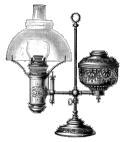
| Reference Desk | Lamp Information | Other Resources | On-Line Shopping |

Purveyors of Antique Lighting and Accessories
435 Main Street
 Hurleyville, New York 12747
Hurleyville, New York 12747
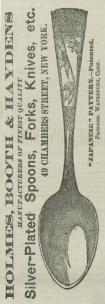 Flatware advertisement 49 Chambers Street, New York City |
 HB&H Advert. Token,
HB&H Advert. Token,sample of nickel silver --------------------- Enlarge image [+] |
a brief historical profile of

The Holmes, Booth & Haydens Company
^ Top of Page
Privacy Policy | Terms and Conditions of Use | Announcements
Copyright © 2001-2011 ~ Daniel Edminster | The Lampworks ~ All Rights Reserved
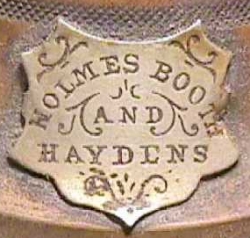
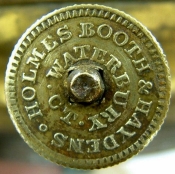
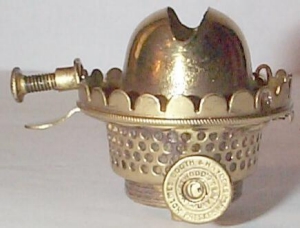
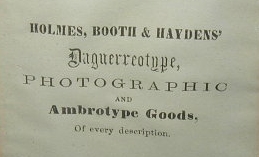
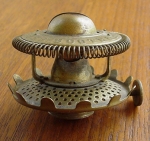
 Search Holmes, Booth & Hayden's Patents
Search Holmes, Booth & Hayden's Patents